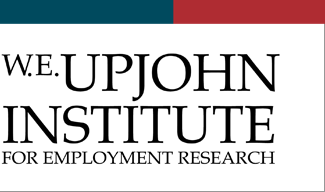Upjohn Author ORCID Identifier
Series
Upjohn Institute Working Paper No. 04-102
**Published Version**
In A Compilation of Selected Papers from the Employment and Training Administration's 2003 Biennial National Research Conference, Joshua Riley, Aquila Branch, Stephen Wandner, and Wayne Gordon, eds. U.S. Dept. of Labor Employment and Training Administration Office of Policy Development, Evaluation, and Research, 2003, pp. 130-184
DOI
10.17848/wp04-102
Issue Date
April 2003
Abstract
The Worker Profiling and Reemployment Services (WPRS) system was established nationwide following the 1993 enactment of Public Law 103-152. The law requires state employment security agencies to profile new claimants for regular unemployment insurance (UI) benefits to identify those most likely to exhaust their regular benefits, and refer them to reemployment services to promote a faster transition to new employment. In November 1994, the Michigan Employment Security Commission (MESC) began profiling new UI claimants with technical assistance from the W. E. Upjohn Institute for Employment Research Since WPRS profiling was introduced in Michigan much has changed, but the same model was in use until very recently. The MESC has been abolished, with UI now administered by the Michigan Bureau of Workers' and Unemployment Compensation (MBWUC). The process of taking UI claims has shifted from in-person interviews at local offices around the state to telephone claims taken by staff at three call centers to be located in Detroit, Grand Rapids, and Saginaw. Michigan has also changed from being a wage-request state for UI eligibility determination to a wage-reporting state. This means that each claimant's full benefit year UI entitlement is now known at the time that eligibility is established, a fact that permits new approaches to WPRS modeling. The MBWUC is also switching to using the new Standard Occupation Code (SOC) and North American Industrial Classification System (NAICS). Furthermore, UI has become a partner in new one-stop centers for employment services established in each workforce development area in the state as required by the Workforce Investment Act (WIA) of 1998. To develop a new Michigan WPRS profiling model which is in harmony with the new institutional realities, the MBWUC once again chose to partner with the W.E. Upjohn Institute for Employment Research. This brief paper offers a new WPRS model for Michigan which improves on the original model by applying lessons learned nationwide in the years since WPRS models were first implemented. A variety of alternative specifications were considered, the best of these was proposed as the new Michigan WPRS model. Michigan has since implemented this model and is now using it to profile UI claimants for referral to reemployment services promoting a speedy return to work.
Sponsorship
Prepared for Michigan Bureau of Workers' and Unemployment Compensation.
Subject Areas
UNEMPLOYMENT, DISABILITY, and INCOME SUPPORT PROGRAMS; Unemployment insurance; Worker profiling
Get in Touch With The Expert
Want to arrange to discuss this work with the author(s)? Contact our .
Included in
Citation
Eberts, Randall W. and Christopher J. O'Leary. 2003. "A New WPRS Profiling Model for Michigan." Upjohn Institute Working Paper No. 04-102. Kalamazoo, MI: W.E. Upjohn Institute for Employment Research. https://doi.org/10.17848/wp04-102

